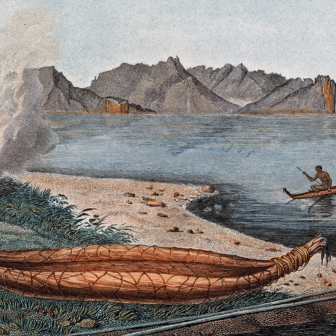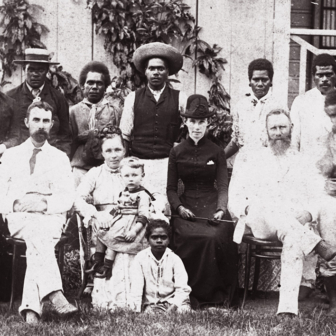The most striking observation in Dean Spears and Michael Geruso’s new book, After the Spike, is summed up by the cover illustration, which shows a world population rising rapidly to its current eight billion before declining to pre-modern levels and eventually to zero. As the authors observe, this is the inevitable implication of the hypothesis that fertility levels will remain below replacement level indefinitely into the future.
Before looking at the argument in more detail, it’s worth recalling Stein’s Law: “If something can’t go on forever, it will stop.” If the world’s population was in danger of falling below the level needed to sustain civilisation (science fiction writer Charlie Stross has estimated 100 million) there would presumably be some kind of drastic action. Fortunately, this is unlikely to happen for another 1000 years or so. If we manage to leave the planet in a habitable condition so far into the future, we can leave population policy to our distant descendants.
Before looking to the future, Spears and Geruso consider the past. The most striking observation here is that fertility (the number of children per woman) has been declining on average ever since reliable records began several hundred years ago. This isn’t news to those who have followed the question closely.
While fertility declined steadily over centuries, infant mortality dropped drastically from the eighteenth century onwards, first in the West and then globally. While fewer children were born, more survived to adulthood.
In exploring these trends, demographers focus on the net reproduction rate, or NRR: the number of surviving daughters per woman. (We all became familiar with this number in a different context in the early days of the Covid pandemic.) When the rate is greater than 1, the population grows.
For a hundred years or so from the late nineteenth century, the NRR rose steadily, reaching a peak of 2.1 in the early 1960s. That’s enough to double the population every generation (or about every thirty-five years). Had that rate continued, the world population would now be around twenty billion. It was in this context that biologist Paul Ehrlich sounded the alarm with his bestseller The Population Bomb, which predicted global disaster as soon as the 1970s.
Spears and Geruso are justifiably critical of Ehrlich’s alarmism. In reality, they observe, we have been highly successful in feeding a growing world population. Nor have predictions of the exhaustion of mineral resources put forward by Ehrlich and dramatised by the Club of Rome been borne out.
But emissions of carbon dioxide have grown drastically, driven in part by the population growth of the late twentieth century. Spears and Geruso mention the issue, but don’t discuss the relationship to population except in the context of our present climate crisis, where (as they say) population is of secondary importance.
The big point Spears and Geruso could have made, but didn’t, is that Ehrlich was sounding the alarm just as the NRR was reaching an inevitable peak. By the 1960s child mortality rates had already been reduced to a level at which further reductions couldn’t outpace the steady decline in fertility that is the central theme of After The Spike. The NRR was bound to fall even without the drastic measures suggested by Ehrlich (and, in more extreme form, by overtly racist writers like Garret Hardin, in his Lifeboat Ethics).
Because the population boom produced a mostly young population, declining fertility didn’t immediately translate into a smaller number of babies. Concern about the possibility of a declining population emerged when the number of births peaked in 2012. This concern built on a much longer, and entirely misguided, tradition of worrying about the supposed dangers of an “ageing population.” Sensibly, Spears and Geruso downplay such concerns, observing: “Restructuring public benefit programs and retirement ages is a fast solution to balancing the books in an ageing population. Raising birth rates is a slow alternative to any of these.”
And what of the far future? Projections show that likely declines in fertility will halve the world population each century after 2100, falling to one billion around 2400. Would that be too few to sustain a modern civilisation ?
We can answer this pretty easily from past experience. In the second half of twentieth century, the modern economy consisted of the member countries of the Organisation For Economic Co-operation and Development. Originally including the countries of Western Europe and North America but soon extended to include Australia and Japan, the OECD countries were responsible for the great majority of the global industrial economy, including manufacturing, modern services and technological innovation.
Except for some purchases of raw materials from the Global South, the OECD, taken as a whole, was self-sufficient in nearly everything required for a modern economy. So the population of the OECD in the second half of last century provides an upper bound to the number of humans needed to sustain such an economy. That number did not reach a billion until 1980.
Things have changed since then with the modernisation of much of Asia and the rise of China as the manufacturing’s “workshop of the world.” But the history is still relevant.
We can also look at the United Sates. Even today, trade accounts for only around 20 per cent of US economic output. Given a US population of 400 million, it is reasonable to suppose that the production of goods and services elsewhere for export to the US might account for another 100 million people. Most of the needs of these people could be met from within the US economy, but let’s suppose that they employ another 100 million in their own countries. That’s still only about 600 million people who, between them, produce all the food they need, the manufactures that characterised the industrial economy of the nineteenth and twentieth centuries, most of the information technology the world relies on, and a steady flow of technological and scientific innovation.
At the lower end of the scale, Stross’s estimated minimum requirement, 100 million people, might need to be higher in a society even more technologically complex than our own. But since current demographic trends won’t produce that number for nearly a millennium, we probably needn’t worry (unless we want to colonise space, the context of Stross’s estimate)
In other words, there is no reason to think a billion people would be too few to sustain a technological economy. But what would a world of a billion people look like?
It’s foolish to try to say much about life hundreds of years from now. What could a contemporary of Shakespeare have to say about the London of today? But we do know that London and other cities existed long before Shakespeare and seem likely to continue far into the future (if we can get there). And many of the services cities have always provided will be needed as long as people are people. So, it might be worth imagining how a world population of one billion might be distributed across cities, towns and rural areas.
Australia, with 5 per cent of the world’s land mass and a current population of twenty-five million, provides a convenient illustration. A billion people would populate forty Australias with twice Australia’s current population density. But around half of Australia is desert or semi-arid (estimates range from 18 to 70 per cent, depending on the classification) and not many people live there. So, the population density of a billion-person world would look pretty much like that of urban and regional Australia today.
Opinions in Australia (as elsewhere in the world) are pretty sharply divided as to whether a bigger population would be a good thing, but it’s unusual for anyone to suggest we are spread too thinly. On the contrary, congestion, sprawl and the conflict between environmental preservation and housing are seen as the price to be paid for a larger population.
A billion-person world could not support mega-cities with the current populations of Tokyo and Delhi. But it could easily include a city the size of London, New York, Rio or Seoul (around ten million each) on every continent, and dozens the size of Sydney, Barcelona, Montreal, Nairobi, Santiago or Singapore (around five million each). Such a collection of cities would meet the needs of even the most avid lovers of urban life in its various forms. Meanwhile, there would be plenty of space for those who prefer the county.
With only a billion people we wouldn’t need all the space in the world. The project of rewilding half the world, now a utopian dream, could be fulfilled while leaving more than enough room for farming and forestry, as well as whatever rural arcadias followers of the simple life could imagine and implement.
The final part of After the Spike looks at policies that might significantly increase fertility and finds, unsurprisingly, that there aren’t any or, at least, none that will make much difference. The negative example of South Korea shows that a combination of patriarchal social attitudes and large-scale female labour force participation can produce very low fertility. And the peculiar circumstances of Israel push rates just above replacement. But otherwise, the NRR in developed countries lies between 0.75 and 0.9, regardless of family policies.
It makes sense to adopt policies that make it easier to raise a family. But most of those policies also make other options easier, with the result that family size doesn’t grow. Having written an entire book on opportunity cost, I am happy to see Spears and Geruso using this concept to make this point.
The central reason for declining birthrates is that, as potential parents, most of us have decided that putting a lot of effort into raising one or two children is better than spreading those efforts over three, four or more. What is true for individual families is true for the world as a whole. Until we have the resources to properly feed and educate all our children, we shouldn’t worry that we are having too few. •
After the Spike: The Risks of Global Depopulation and the Case for People
By Dean Spears and Michael Geruso | Bodley Head | $55 | 320 pages




